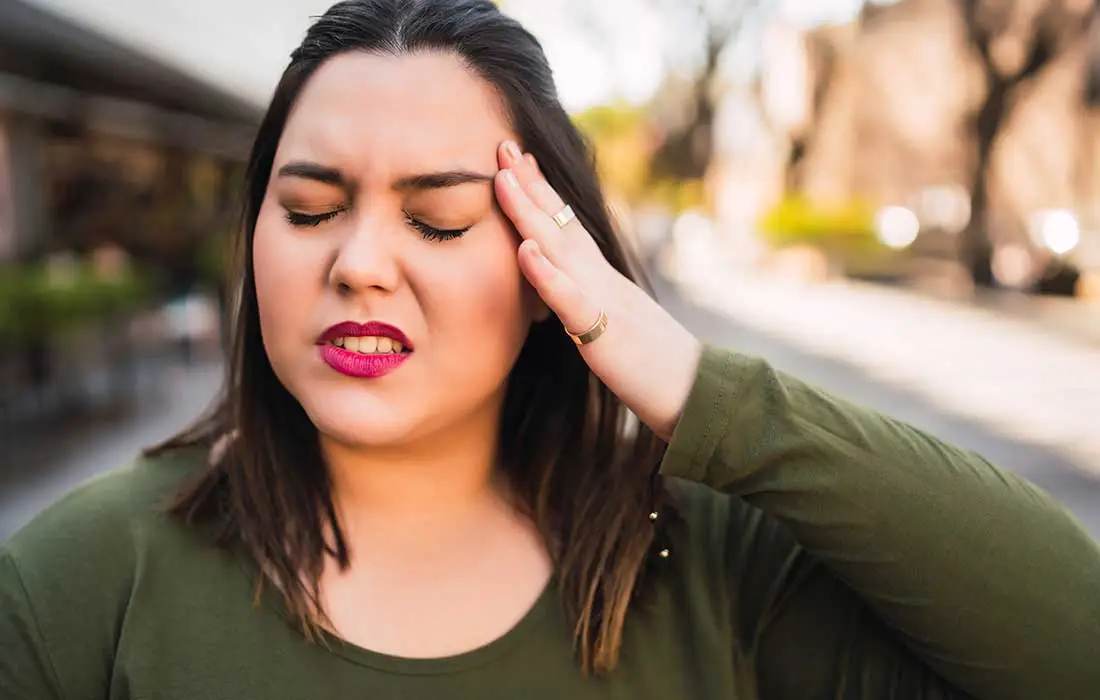Does Rilassáre's alternative medicine replace traditional medicine?
No, alternative medicine is an adjunct to treatments the patient may be taking and is not contraindicated in any case due to its safety and lack of adverse reactions or effects. Alternative medicine helps strengthen your immune system and regulates your body's acidity for optimal function.
What is a headache?
Painful sensation in any part of the head, ranging from sharp to mild pain and may occur with other symptoms.
Most people experience headaches from time to time. However, if you experience headaches almost every day, you may have chronic daily headaches.
Rather than a specific type of headache, chronic daily headaches comprise a variety of headache subtypes. "Chronic" refers to the frequency with which the headaches occur and the length of time the condition lasts.
The constant nature of chronic daily headaches makes them one of the most disabling headaches. Aggressive initial treatment and consistent long-term management can reduce pain and lead to fewer headaches.
Symptoms of headache:
By definition, chronic daily headaches occur 15 or more days per month, for more than three months. True (primary) chronic daily headaches are not caused by another condition.
There are chronic daily headaches of short duration and long duration. Long-term headaches last more than four hours. These include:
- • Chronic migraine.
- • Chronic tension-type headache.
- • Chronic daily headache.
- • Continuous hemicrania.
Causes of hair loss
The causes of many chronic daily headaches are not well understood. True (primary) chronic daily headaches have no detectable underlying cause.
Some conditions that may cause non-primary chronic daily headache include:
- • Inflammation or other problems of the blood vessels in and around the brain, such as stroke.
- • Infections, such as meningitis.
- • Intracranial pressure too high or too low.
- • Brain tumor.
Types of headaches
Chronic tension-type headache
Por lo general, estos dolores de cabeza:
- • They affect both sides of the head.
- • They cause mild to moderate pain.
- • They cause pain that feels like pressure or tension, but is not throbbing.
Chronic daily headache
These headaches appear suddenly and usually occur in people with no history of headaches. Starting on the third day after the first headache, they become constant. These pains:
- • They frequently affect both sides of the head.
- • They cause pain that feels like pressure or tension, but is not throbbing.
- • They cause mild to moderate pain.
- • They may have characteristics similar to chronic migraine or chronic tension-type headache.
Continuous Hemicranial Headache
Characteristics of these headaches:
- • Affect only one side of the head.
- • Are daily and continuous, with no pain-free periods.
- • Cause moderate pain with sudden intense pain spikes.
- • Respond to the prescription pain reliever indomethacin (Indocin).
- • Can become severe with migraine-like symptoms.
Additionally, headaches caused by continuous hemicrania are associated with at least one of the following symptoms:
- • Red and watery eyes on the affected side.
- • Nasal congestion or runny nose.
- • Drooping eyelid or narrowed pupil.
- • A sense of restlessness.
Headache Treatments
There are some steps that can be taken at home to relieve headaches. When symptoms begin, the following recommendations can be followed:
- • Drink plenty of water to avoid dehydration.
- • Rest in a dark, quiet room.
- • Apply a damp cloth to the forehead.
It is also recommended to keep a headache diary, which can help identify what’s causing the pain. You can write down:
- • Date and time when the headache started.
- • Foods and drinks consumed in the past 24 hours.
- • Number of hours slept.
- • Activities done before the pain began.
- • Duration of the headache and how it stopped.
As long as the headache is not caused by any of the serious conditions mentioned earlier, a specialist may recommend certain treatments or preventive medications, pain-relieving drugs, or even suggest lifestyle and habit changes, including relaxation techniques and stress management.
Headache Complications
If you suffer from chronic daily headaches, you are also more likely to experience depression, anxiety, sleep disorders, and other physical and psychological issues.
Headache Prevention
Taking care of yourself can help ease chronic daily headaches.
- •Avoid headache triggers. Keeping a headache diary can help you identify triggers so you can avoid them. Include details about each headache, such as when it started, what you were doing at the time, and how long it lasted.
- •Avoid overusing medications. Taking headache medication, even over-the-counter ones, more than twice a week can increase headache frequency and severity. Talk to your doctor about how to taper off medications, as doing so improperly may cause serious side effects.
- •Get enough sleep. The average adult needs seven to eight hours of sleep per night. Try to go to bed and wake up at the same time every day. Talk to your doctor if you have sleep disturbances like snoring.
- •Don’t skip meals. Eat healthy meals at approximately the same time every day. Avoid foods or beverages—such as those containing caffeine—that seem to trigger headaches. Lose weight if you are obese.
- •Exercise regularly. Regular aerobic physical activity can improve your physical and mental well-being and reduce stress. With your doctor’s approval, choose activities you enjoy, such as walking, swimming, or cycling. Start slowly to prevent injuries.
- •Reduce stress. Stress is a common trigger for chronic headaches. Get organized. Simplify your schedule. Plan ahead. Stay positive. Try stress-reducing techniques such as yoga, tai chi, or meditation.
- •Cut back on caffeine. Although some headache medications contain caffeine because it can help relieve pain, it can also make headaches worse. Try to minimize or eliminate caffeine from your diet.
Online Doctor
If you would like an online consultation with one of our doctors, click the button below to visit our website www.virtualmedical.com.mx
Visit Site
